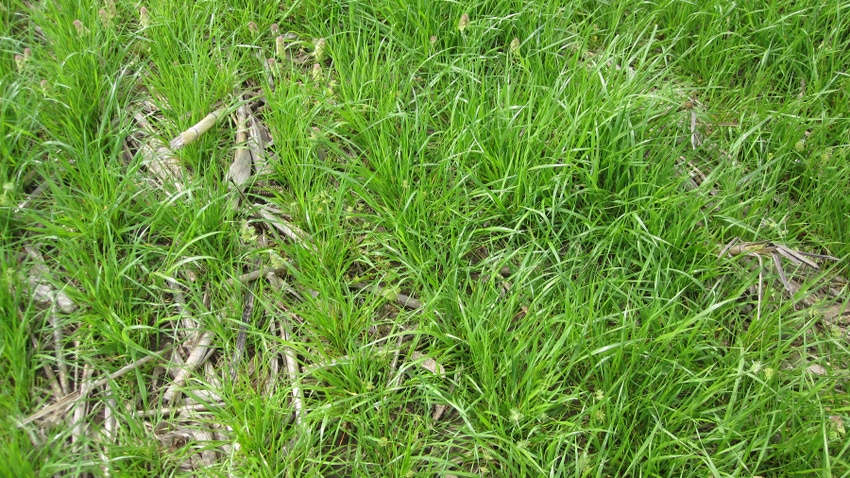March 7, 2023

Spring warmup is coming. Over winter, cover crops such as cereal rye and annual ryegrass did their thing. Growth can seemingly happen overnight this time of year, especially if there is adequate soil moisture and warm weather. Let’s review some simple concepts for termination of grass cover crops to prevent potential issues that come with ineffective termination.
Cereal rye is a great cover crop, especially before planting soybeans, and is a great option for improving season-long weed control. If weed control is your primary goal, rye will need to be terminated late, after it has reached maturity and the carbon level has increased. This will slow down decay after termination. As a general rule, you need at least 2,500 pounds of cereal rye biomass per acre for season-long control of weeds.
That means rye will have moved out of the vegetative stage and into a more mature stage, changing the approach for termination. At least 2,500 pounds of biomass is also enough to compete with any weeds that might be present, potentially weakening them and making them easier to control with herbicides.
Plant first?
The first consideration is to delay termination until after planting, so high-carbon rye residue is not on the soil surface, impacting the soil’s ability to dry after a rain before planting. For the most part, standing rye is easier to plant through than terminated rye, especially at high biomass levels needed for weed control.
If you are thinking about using a roller-crimper for termination, rye will need to be dropping pollen for effective control. Again, it is best to plant first and then terminate, because soybeans can tolerate roller-crimping until they’re about 4 inches tall.
Cereal rye and annual ryegrass are two totally different plants with much different characteristics. Annual ryegrass is a forage grass with deep roots.
Terminating annual ryegrass
Termination of annual ryegrass comes with a recipe that you need to follow for effective control. A roller-crimper is not an option for termination.
Some simple concepts make annual ryegrass termination effective. Wait until it is actively growing. Look for three days over 50 degrees F with temperatures not colder than 32 degrees at night. Spray only during the warm part of the day, and allow time for the herbicide to translocate before dark.
It is critical to check acidity and hardness of spray water to be sure the herbicide can perform at its best. If you follow the recipe, annual ryegrass can be effectively terminated. Annual ryegrass is a great cover crop providing up to 5 feet of roots below the soil surface. Any crop with this much root system is resilient. So, it is important to make sure to follow a successful plan for termination.
Cover crops provide many benefits for your cash crop, such as weed control, improved soil health through increased organic matter, better nutrient cycling and reduced soil erosion. To fully realize these benefits, covers must be effectively managed. This includes proper termination.
If you have specific questions about cover crop management, contact your local soil and water conservation district or Natural Resources Conservation Service office.
Donovan is a district conservationist with NRCS. He writes on behalf of the Indiana Conservation Partnership.
About the Author(s)
You May Also Like






